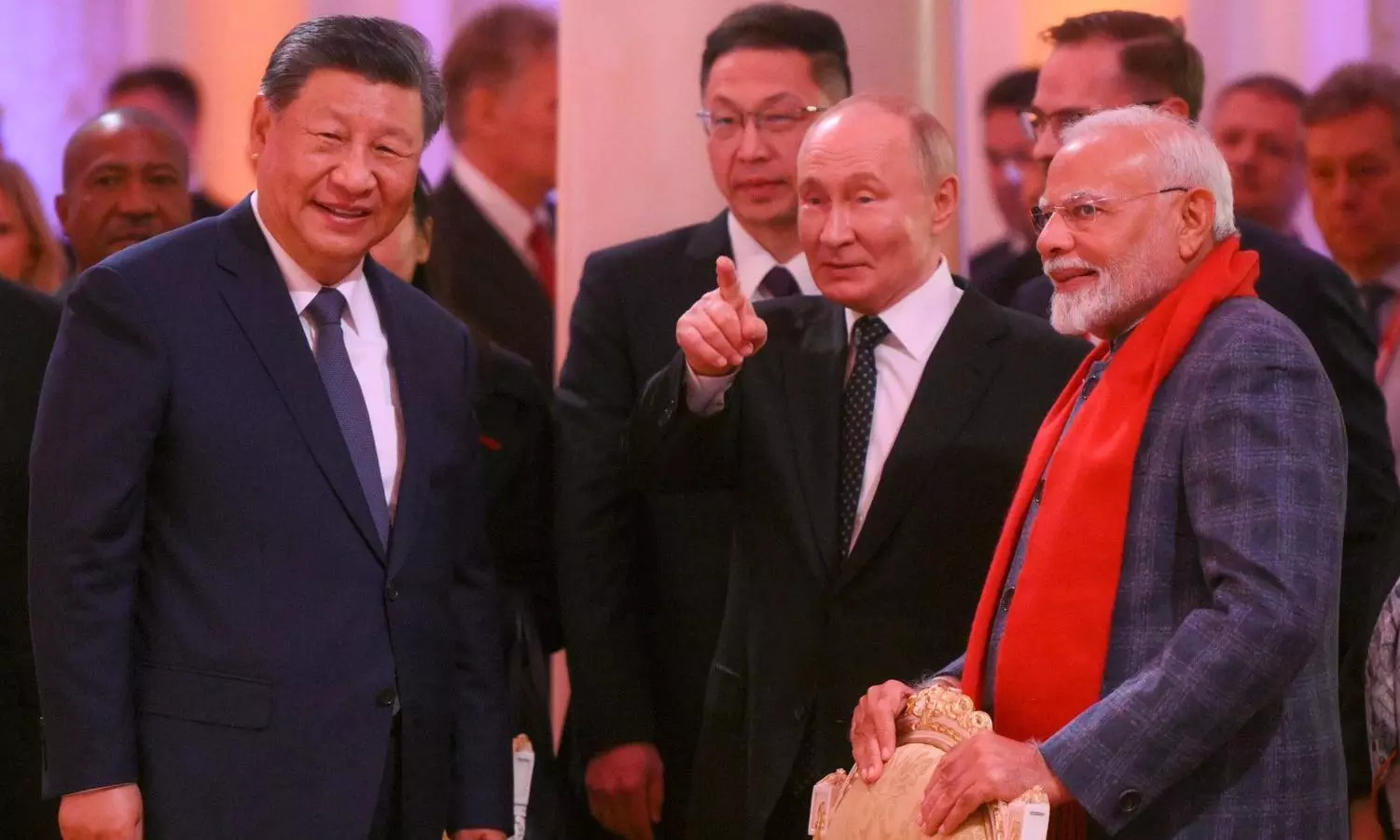
- Home
- India
- World
- Premium
- THE FEDERAL SPECIAL
- Analysis
- States
- Perspective
- Videos
- Sports
- Education
- Entertainment
- Elections
- Features
- Health
- Business
- Series
- In memoriam: Sheikh Mujibur Rahman
- Bishnoi's Men
- NEET TANGLE
- Economy Series
- Earth Day
- Kashmir’s Frozen Turbulence
- India@75
- The legend of Ramjanmabhoomi
- Liberalisation@30
- How to tame a dragon
- Celebrating biodiversity
- Farm Matters
- 50 days of solitude
- Bringing Migrants Home
- Budget 2020
- Jharkhand Votes
- The Federal Investigates
- The Federal Impact
- Vanishing Sand
- Gandhi @ 150
- Andhra Today
- Field report
- Operation Gulmarg
- Pandemic @1 Mn in India
- The Federal Year-End
- The Zero Year
- Science
- Brand studio
- Newsletter
- Elections 2024
- Events
- Home
- IndiaIndia
- World
- Analysis
- StatesStates
- PerspectivePerspective
- VideosVideos
- Sports
- Education
- Entertainment
- ElectionsElections
- Features
- Health
- BusinessBusiness
- Premium
- Loading...
Premium - Events

The Modi government, as a marginalised US ally, is smarting; and, one way it can get back against the West is to repair its relationship with China
Over the last few days, enough has been said and written about the “agreement” between India and China to allow patrolling on both sides, though details have been sparse.
The significance, however, goes beyond the agreement. It has been a while since the two neighbours exchanged positive vibes. Their relationship has been laced with tension since the agreement to disengage from Hot Springs patrolling point a couple of years ago.
It is tempting to assume that this deal was struck on the eve of the ongoing Kazan BRICS summit, in time for a more friendly exchange when Prime Minister Narendra Modi and Chinese President Xi Jinping arrive to take part in the larger gathering of the leaders.
Even if that is so, it would be worthwhile to scan wider to get a sense of the agreement. The Indian government has been badly bruised in its encounter with Canada over the killing of Khalistani activist Hardeep Singh Nijjar. Canadian Prime Minister Justin Trudeau has alleged that Indian agents were behind the murder.
Canadian misadventure
If the Modi government assumed it had everything under control, that was not to be. The US stepped in to support Canada. The Five-Eyes Alliance, comprising the US, Canada, UK, Australia, and New Zealand, responded, backing one of their own, Canada.
Also Watch: India-China deal: Is it mere chest-thumping?
India, which had considered itself part of the US-led Western alliance, found itself in the cold. Clearly, there were definite limits to New Delhi’s relationship with the West. Over the last two decades, India has diplomatically moved swiftly towards the US, and the West. Friends of the US are now friends of India, notable among them Israel.
As long as the US-Russia relationship was on an even keel, despite legacy tensions, India did not face major challenges in its balancing strategy except for Moscow, initially. President Vladimir Putin put India on notice in 2014, when he opened up to Pakistan and sewed up a military arrangement with Islamabad.
India, which had been friends with the Soviet Union and then Russia for decades, attempted to make amends and restore relations with Putin.
The Ukraine turning point
Russia’s invasion of Ukraine in February 2022, however, ruptured the diplomatic equations between Moscow and the West. And, this has had a direct impact on India. Though the Modi dispensation has been “allowed” to trade with Moscow, despite the US-led sanctions against it, the West appears increasingly uncomfortable with New Delhi’s “defiance”.
The recent yo-yo-type visits of Modi to Russia (to meet Putin) , then to Ukraine (to meet President Volodymyr Zelenskyy), and one more meeting with Zelenskyy in the US, were the most evident reflection of the kind of pressure India is in with regard to ties between the two Blocs. Whether Modi initiated the call or not is not clear, but he was reported to have briefed US President Joe Biden and Putin about his visits to the rival nations.
In the middle of this has come the serious impasse with Canada over Nijjar’s killing. Adding more fuel to the volatile diplomatic mix was the US’s FBI trapping an Indian agent who was reportedly arranging the killing of another Khalistani activist-lawyer in the US, Gurpatwant Singh Pannun. Unlike in the case of Canada, the Modi government appears to have been willy-nilly forced to cooperate with the US investigations into the Pannun kill attempt.
India, which looked to its other purported allies in the West for support, including the United Kingdom, got no succor. The lesson is stark and sobering: India may be a US ally, but not in the same league as Canada, UK, Australia or New Zealand.
Repair ties with China
The Indian government, as a marginalised ally, will naturally be smarting. And, one way it can get back against the West is to repair its relationship with China.
After all, why does New Delhi think it is important to ally with the US-led West? To be part of the Quad, comprising the US, Japan, Australia and itself. Because New Delhi believes it is an insurance against China’s belligerence, that the West will come to New Delhi’s support in the event of an exigency.
The Quad is a noticeable irritant for China. Beijing has expressed itself against the grouping and explicitly stated that it views the Quad as anti-China. But India has disregarded China’s views as it calculates that there is no other option but to go with the West.
The developments of the last two days, in the signing of the agreement with China, indicate there is a change of heart in New Delhi’s South Block. Modi let slip the Indian government’s thinking when earlier this week at a public forum he said that India does not believe in being “taken-for-granted” in international relations.
If there are clear red lines in the relationship with the US, which will not hesitate to throw New Delhi under the bus in a crisis, it becomes imperative for India to sort out issues with Beijing ASAP.
Also Read: What’s going on with US and Canada? Govt must come clean with public
This serves two purposes—one, obviously, to ease tensions with China. Second, it will unsettle Washington. The US and its allies will not appreciate India mending fences with its neighbour as that will reduce New Delhi’s dependence on Washington, et al.
However, in international realpolitik, there is no free lunch. For India to ease ties with China, it will have to give in, at least minimally. That is probably the reason why the agreement, though signed and announced with much hype, is short on details.
The story on the border, when last heard, was that China had moved forward pushing India’s patrolling points by several kilometres southwards. With both the Indian External Affairs spokesperson and Foreign Minister S. Jaishankar not willing to commit on whether status quo ante as of May 2020 would be restored, it appears that the situation will remain as it stands today.
Also Watch: How do we read the India-Canada conflict?
It will be difficult, and it has always been so, for India to force Chinese troops to move back in its entirety from where they push forward along the disputed, unmarked border. “Two steps forward, and one step back” has been Chinese policy.
This being the case, the Modi government may have even decided to let go some land in return for a more affable relationship with Beijing, given the cold air blowing from the West. There is danger lurking in this strategy too, but that is a story for another day.
Also Read: Wait before going gaga over the semiconductor fab pact with the US


